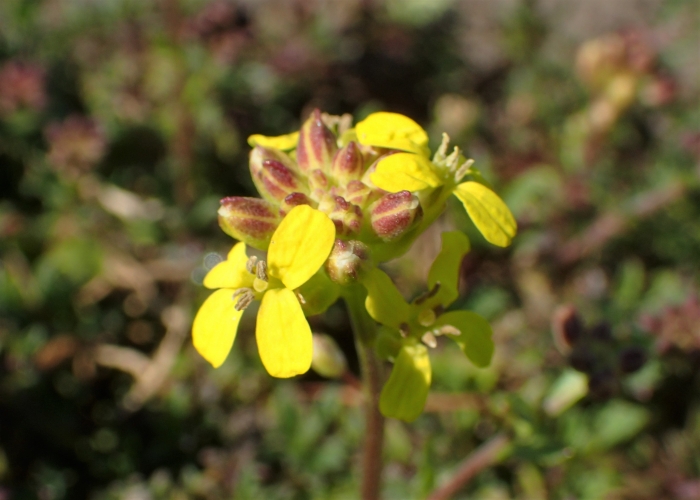Beautiful Wallflower
(Erysimum pulchellum)
Beautiful Wallflower (Erysimum pulchellum)
/
/

Krzysztof Ziarnek, Kenraiz
CC BY-SA 4.0
Image By:
Krzysztof Ziarnek, Kenraiz
Recorded By:
Copyright:
CC BY-SA 4.0
Copyright Notice:
Photo by: Krzysztof Ziarnek, Kenraiz | License Type: CC BY-SA 4.0 | License URL: https://creativecommons.org/licenses/by-sa/2.0 | Uploader: Kenraiz | Publisher: Wikimedia Commons |

















Estimated Native Range
Summary
Erysimum pulchellum, commonly known as Beautiful Wallflower, is an evergreen perennial herb that is native to rocky slopes and scrublands in the Middle East, including Turkey. It typically grows to a height and width of 2 feet (0.6 meters), forming a compact bush with narrow, lance-shaped leaves. The plant is adorned with bright yellow flowers in the spring, which are highly fragrant and attract a variety of pollinators.
The Beautiful Wallflower is valued for its long blooming period and vibrant flowers that can add a splash of color to rock gardens, borders, and containers. It is relatively low maintenance, requiring minimal water once established, and thrives in well-drained soils. Full sun exposure is essential for optimal flowering. While it is not commonly afflicted by diseases, it can suffer from root rot if overwatered or planted in poorly drained soils. This species is not known for aggressive roots or significant pest problems. It is not typically invasive when grown outside its native range, but gardeners should always monitor and manage plantings responsibly.CC BY-SA 4.0
The Beautiful Wallflower is valued for its long blooming period and vibrant flowers that can add a splash of color to rock gardens, borders, and containers. It is relatively low maintenance, requiring minimal water once established, and thrives in well-drained soils. Full sun exposure is essential for optimal flowering. While it is not commonly afflicted by diseases, it can suffer from root rot if overwatered or planted in poorly drained soils. This species is not known for aggressive roots or significant pest problems. It is not typically invasive when grown outside its native range, but gardeners should always monitor and manage plantings responsibly.CC BY-SA 4.0
Plant Description
- Plant Type: Herb
- Height: 0.1-0.3 feet
- Width: 1-2 feet
- Growth Rate: Moderate
- Flower Color: Yellow
- Flowering Season: Spring
- Leaf Retention: Evergreen
Growth Requirements
- Sun: Full Sun
- Water: Low, Medium
- Drainage: Fast, Medium
Common Uses
Bee Garden, Butterfly Garden, Deer Resistant, Drought Tolerant, Fragrant, Low Maintenance, Rock Garden, Showy Flowers
Natural Habitat
Native to rocky slopes and scrublands in the Middle East, including Turkey
Other Names
Common Names: Gullkårel
Scientific Names: , Erysimum pulchellum, Erysimum azerbaidzanicum, Erysimum lazistanicum, Erysimum rupestre, Erysimum laciniatum, Cheiranthus pulchellus, Sisymbrium pulchellum, Cheiranthus rupestris, Erysimastrum lazistanicum
GBIF Accepted Name: Erysimum pulchellum (Willd.) J.Gay